Introduction
The purpose of this paper is to analyse foreign direct investment (FDI) in India. FDI refers to “the net inflow of investment to acquire a lasting management interest in an enterprise operating in an economy other than that of the investor” (World Bank 2015). Developing countries have focused on attracting FDI to boost economic growth (Bose 2012, pp. 162-172). In this respect, the paper will discuss the main theories that explain FDI. It will also analyse the costs and benefits of FDI in India. This will include analysis of India’s FDI data with reference to world trend.
FDI Theories
Perfect Competition Theory
In a perfectly competitive market, the marginal productivity of capital in the investing country is equal to that in the host country (Nayak & Choudhury 2014, pp. 1-27). FDI allows the investing country to earn income from its investments in foreign markets. The foreign income is expected to offset any reduction in domestic income during economic decline. This motivates companies to undertake FDI. This theory has been discredited based on the fact that FDI cannot take place under perfect competition.
Imperfect Market Theories
Industrial Organisation Theory
The industrial organisation theory was developed by Hymer in 1976. Its main argument is that foreign companies have to “compete with domestic firms that are in advantageous position in terms of culture, language, legal system, and consumer preference” (Nayak & Choudhury 2014, pp. 1-27). International investment can only be profitable if multinational corporations (MNCs) have adequate market power to counter the advantages of local firms. Market power can be achieved through firm-specific advantages such as superior technology, brand names, and economies of scale.
Technology is the most important determinant of market power since it allows firms to develop superior products. Given the imperfection of the market, companies can use their market power to earn high profits (Denisia 2010, pp. 104-108). FDI is the best way to exploit firm-specific advantages since exporting often exposes companies to the risk of sharing their technologies with competitors. The main weakness of Hymer’s theory is that it does not articulate where and when FDI occurs.
Monopoly-based FDI
According to Kindleberger (1969), the advantages that MNCs possess are only beneficial in a monopoly market. Advantages such as superior technology motivate firms to invest abroad if they can make monopoly profits. This theory fails to identify the specific advantage that companies should focus on (Denisia 2010, pp. 104-108). Moreover, host countries are not likely to allow foreign firms to operate as monopolies.
Internalisation Theory
Internalisation theory is based on three assumptions. First, companies that operate in imperfect markets maximise profits. Second, companies have the incentive to ignore imperfect goods market by establishing their own internal markets. Three, multinational corporations emerge as companies focus on internalisation (Nayak & Choudhury 2014, pp. 1-27). The main argument of the theory is that “a company might find it difficult to sell its technology or inputs to other companies due to high transaction costs” (Nayak & Choudhury 2014, pp. 1-27). Thus, the company can improve its competitiveness by transferring its technology and inputs to its subsidiaries. In this case, FDI occurs if internalisation leads to establishment of operations in different countries.
Oligopoly-based FDI
An oligopoly market is associated with imitative behavior among firms. Companies often imitate each other’s location decisions to maintain their competitiveness. Companies that are uncertain about production costs in export markets can be undercut if their competitors decide to produce in foreign markets instead of exporting (Carbaugh 2012, p. 67). In this context, a company will follow its competitors’ FDI decisions to maintain competitive prices. Although this theory explains FDI in industries such as electronics, it ignores the fact that the incentive to establish production plants overseas tend to reduce when production costs are certain.
Eclectic Theory
Eclectic theory shows that three conditions must be met to justify FDI. First, a company should have more asset ownership advantages than its competitors. Second, internalising ownership advantages should be beneficial to MNCs (Reinert 2011, p. 78). Third, using ownership advantages in a foreign country should produce location advantages. These conditions show that a company with ownership and location advantages will make high profits by producing goods in a foreign country rather than domestically.
Product Lifecycle Theory
This theory states that FDI occurs as the production of a product evolves through three stages. In the first stage, innovation leads to production of new products that are sold in high-income countries. Increased production necessitates exploration of export markets. In the second stage, the demand for the product is expected to continue to increase in foreign markets. This leads to emergence of competitors and price reductions (Nayak & Choudhury 2014, pp. 1-27).
Thus, the original manufacturer has to invest in foreign production plants to compete effectively with rivals. In the last stage, the product is standardised as production technology becomes available to several companies. This leads to FDI as companies relocate their production plants to countries with low production costs. For instance, production of personal computers (PCs) started in the US before being shifted to Japan. Currently, production of PCs mainly occurs in China where production costs are very low. Nonetheless, the theory does not identify the most profitable time to invest abroad.
Benefits
Economic Growth
Net FDI as a percentage of GDP in India increased from 0.03% in 1991 to 0.61% in 1996. Similarly, GDP growth increased consistently from 1.06% in 1991 to 7.55% in 1996 as shown in figure 1. From 2000 to 2007, both GDP and FDI increased as indicated in figure 1 and table 2. The reduction in FDI from 1.94% in 2011 to 1.5% in 2013 was accompanied by a decline in GDP growth from 6.64% to 5.02%. Overall, these statistics indicate a positive correlation between FDI and GDP growth. Increased FDI is likely to have promoted economic growth in India by providing the foreign capital that most companies needed to increase their productivity (Reinert 2011, p. 211). For instance, acquisitions by MNCs brought cheap capital that Indian firms needed to expand.
Nevertheless, between 1997 and 1999, as well as, 2008 and 2010, the correlation between FDI and GDP growth seemed to be negative. In both periods, FDI was decreasing, whereas GDP was increasing. The decline in FDI between 1997 and 1999 can be attributed to the Asian financial crisis, which reduced FDI from Asian economies such as Japan and Singapore. The consistent increase in GDP during the two periods indicates that FDI is not a major determinant of GDP growth in India.
Balance of Payment
FDI is expected to reduce current account deficits in the host country by increasing exports (Carbaugh 2012, p. 67). However, table 1 shows that India’s current account has been in deficit since 1991 despite the increase in FDI. The deficit can be explained by the fact that FDI led to increased importation of intermediate goods (Jomon 2013, pp. 1-13). This shows that FDI did not help India to increase exports to earn the foreign exchange that it needed to pay for its imports. However, table 1 shows that capital account surplus offset current account deficits, thereby creating a balance of payment surplus.
Costs
Unemployment Rate
Conceptually, an increase in FDI is expected to reduce unemployment rate (Bagaria & Santra 2014, pp. 1-10). FDI reduces unemployment by creating jobs through establishment of new companies or expansion of existing ones. Figure 2 shows an upward trend in FDI between 1991 and 2008. However, unemployment rate remained relatively stable around 4%. This means that FDI did not significantly reduce unemployment rate. Given the large size of India’s population, only a significant increase in FDI can have a positive impact on its unemployment rate. Moreover, MNCs might not create a lot of job opportunities due to substitution effect. Acquisitions can also result into loss of jobs due to restructuring.
Competition
FDI has increased competition in major industries such as manufacturing, retail, and automobile. In the retail industry, local shops and groceries cannot compete with MNCs such as Tesco and Wal-Mart. Lack of competitiveness will lead to closure of local firms, thereby increasing unemployment (Saifi & Nabi 2013, pp. 1-10). Intense competition can also result into price wars. This will hurt local suppliers since they will have to accept low prices to allow MNCs to operate profitably.
Trend Analysis
Figure 3 shows that India’s net FDI was lower than that of the world in the last 20 years. The world FDI averaged 2.14% of GDP between 1991 and 2013. India, on the other hand, achieved only 1.12%. Figure 4 shows that FDI in India almost converged to that of OECD countries in the last five years. A better picture of India’s ability to attract FDI can be obtained by comparing it with BRIC countries. Figure 5 indicates that FDI in India lagged behind those of all BRIC countries except South Africa. India also lagged behind Sub-Sahara Africa and the Middle East in attracting FDI as shown in figure 6.
Several factors account for the poor performance of India in attracting FDI. To begin with, the country lacks adequate infrastructure (Bose 2012, pp. 162-172). The country has not been able to satisfy the demand for energy, which keeps increasing as its economy grows. Roads are still in poor condition, whereas port facilities are facing significant capacity constraints. High energy costs and insufficient transport infrastructure increase the cost of doing business, thereby discouraging FDI.
Although India has a large market in terms of population size, most of the citizens are low and middle-income earners. The middle class in India is small and faces significant budget deficits. In this respect, India is a market characterised by a high savings rate and low consumption, which makes it unattractive to MNCs. Heavy regulation, indirect taxes, and corruption also discourage FDI in India.
India outperformed Japan in attracting FDI in the last 20 years. Its level of FDI also converged to that of the US as shown in figure 7. India overtook Japan and the US in attracting FDI because of its cheap labour (Saifi & Nabi 2013, pp. 1-10).
Conclusion
FDI is explained by several theories that articulate the factors that motivate MNCs to invest abroad. In India, FDI led to improved economic growth and balance of payment surplus. However, it has not helped the country to reduce unemployment. Moreover, it has led to increased competition in various industries. India still lags behind its peers in attracting FDI. Consequently, the government should focus on infrastructure development and effective regulation to attract FDI.
Appendix
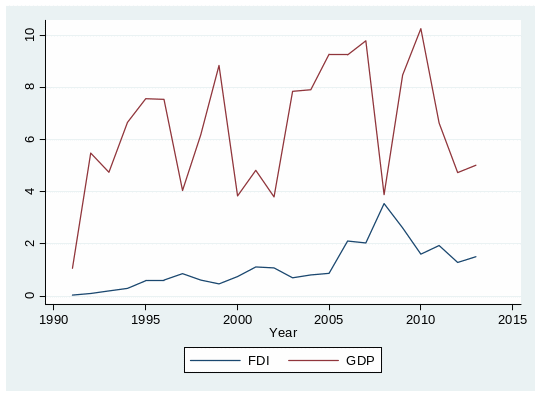
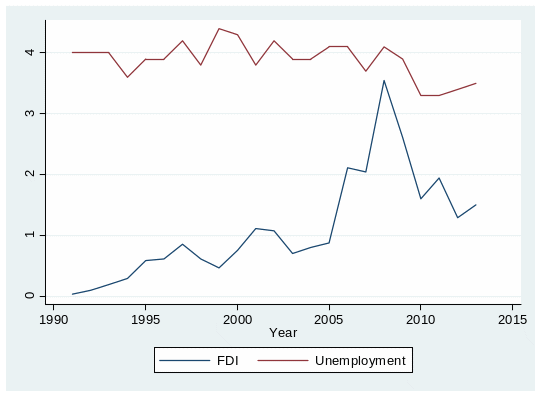
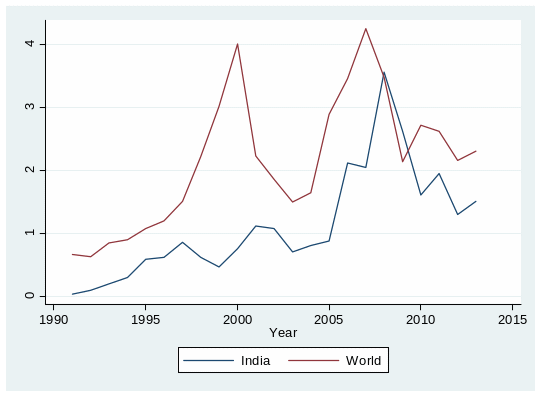
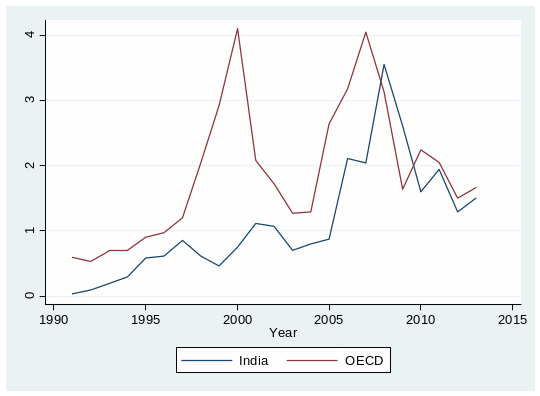
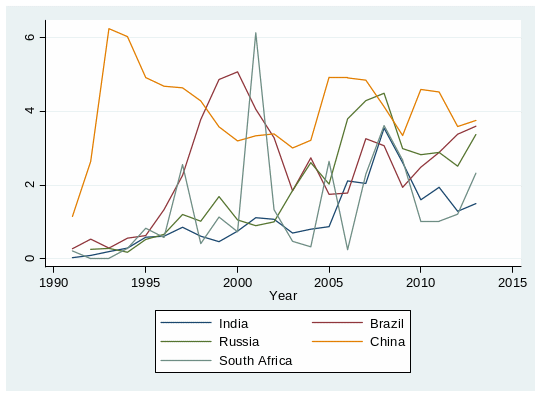
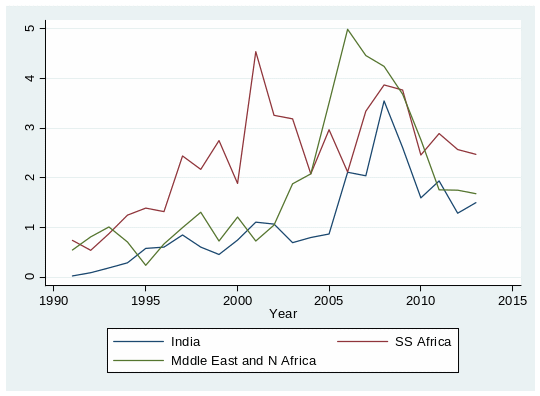
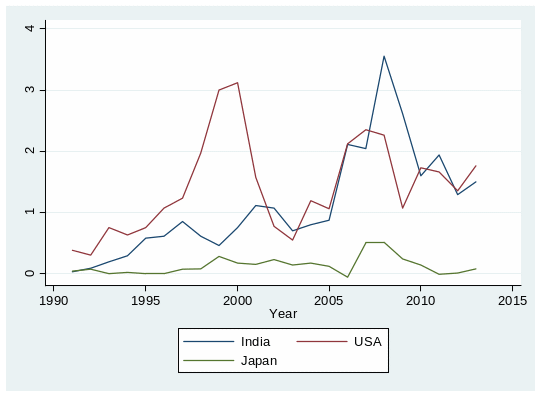

Table 2: FDI and select macro-economic variables.
References
Bagaria, N & Santra, S 2014, ‘Foreign direct investment in retail market in India: some issues and challenges’, Journal of Economics, vol. 2. no. 1, pp. 1-10. Web.
Bose, T 2012, ‘Advantages and disadvantages of FDI in China and India’, International Business Research, vol. 5. no. 5, pp. 164-172. Web.
Carbaugh, R 2012, International economics, Cengage Learning, Mason. Web.
Denisia, V 2010, ‘Foreign direct investment theories: an overview of the main FDI theories’, European Journal of Interdisciplinary Studies, vol. 2. no. 1, pp. 104-108. Web.
Jomon, M 2013, Trends and challenges of India’s balance of payments, MPRA, Munich. Web.
Kindleberger, P 1969, American business abroad, Yale University Press, New Haven. Web.
Nayak, D & Choudhury, R 2014, A selective review of foreign direct investment theories, ESCAP, Bangkok. Web.
Reinert, K 2011, An introduction to international economics, Cambridge University Press, Cambridge. Web.
Saifi, M & Nabi, K 2013, ‘Impact of FDI on the Indian retail sector’, Journal of Business Management, Commerce, and Research, vol. 2. no. 6, pp. 1-10. Web.
World Bank 2015, Foreign direct investment net inflows. Web.